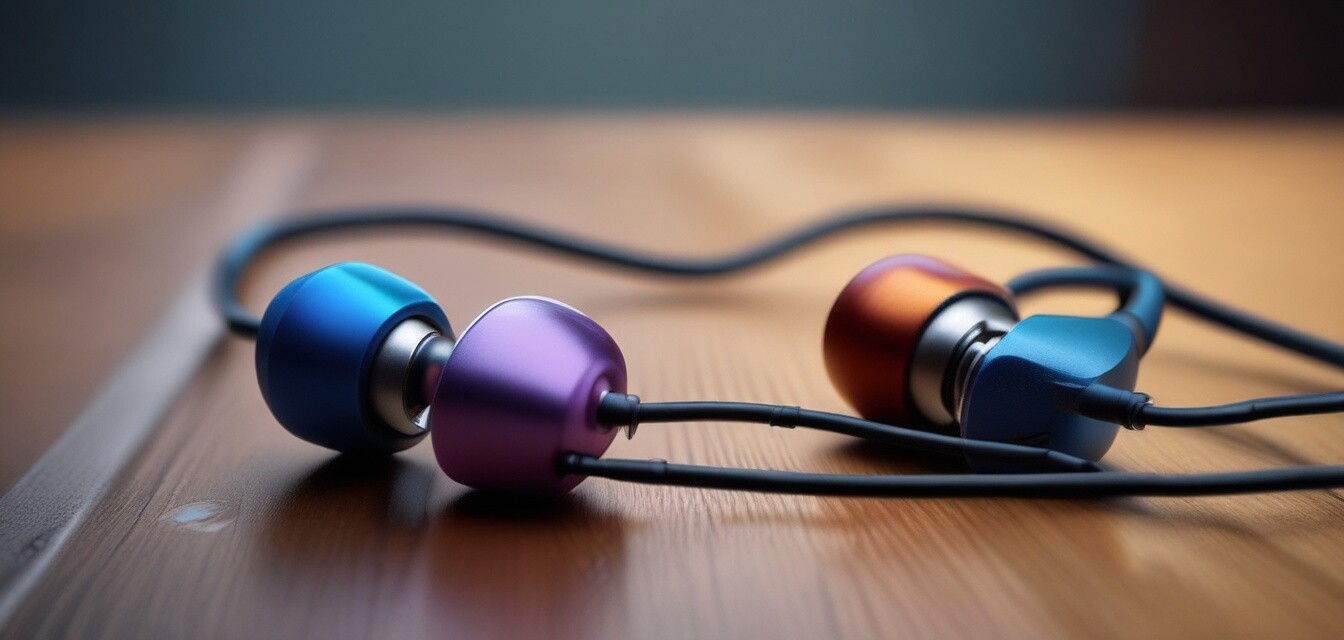
Exploring the Differences in Sound Signatures of Earbuds
Key Takeaways
- Understanding sound signatures is crucial for selecting the right earbuds.
- Different sound profiles can enhance various genres of music.
- Personal preference plays a significant role in choosing the best earbud for your needs.
- Testing multiple models helps in selecting the perfect fit with desired sound characteristics.
When it comes to choosing the right earbuds, audiophiles and casual listeners alike often find themselves overwhelmed by the variety of options available. Each earbud brand presents different sound signatures that affect how music is experienced. This article will help you explore these differences, enabling you to make an informed decision when selecting your next pair of earbuds.
What Is a Sound Signature?
A sound signature refers to the unique tonal qualities and overall balance of frequencies produced by a pair of earbuds. It encompasses how different sounds are emphasized or subdued in the audio spectrum, impacting your listening experience. The primary frequency ranges that make up sound signatures are:
- Bass (20 Hz - 250 Hz): The low-end sounds that give depth and warmth.
- Mids (250 Hz - 2000 Hz): The heart of most musical expressions, including vocals and instruments.
- Treble (2000 Hz - 20 kHz): The high-end sounds that add sparkle and clarity.
Types of Sound Signatures
Various earbud brands offer different sound signatures to cater to diverse listener preferences. Here are the most common types of sound signatures you’ll encounter:
| Sound Signature | Description | Best For |
|---|---|---|
| Flat | Balanced across all frequencies, with no particular emphasis. | Studio monitoring and critical listening |
| V-Shaped | Highlighted bass and treble, recessed mids; engaging and lively sound. | Pop, hip-hop, and electronic music |
| Warm | Bass-heavy sound with smooth mids and rolled-off highs for a cozy feeling. | Acoustic and jazz |
| Bright | Emphasized high frequencies for clarity, potentially harsh with poor recordings. | Classical and vocal-centric music |
| Dark | Reduced treble frequencies, creates a mellow and smooth listening experience. | Relaxed settings and genres |
Comparing Popular Earbud Brands
Understanding the general sound signature of popular earbud brands can help narrow your options. Below is a comparison of some renowned brands and their commonly known sound styles:
| Brand | Typical Sound Signature | Notes |
|---|---|---|
| Audio-Technica | Balanced | Great for studio monitoring, reliable and detailed sound. |
| Sony | V-Shaped | Popular for their bass-heavy models, ideal for modern music genres. |
| Bose | Warm | Excellent noise cancellation, smooth listening experience. |
| Shure | Flat | Highly regarded for their accuracy and fidelity. |
| Jabra | V-Shaped | Great versatility, suitable for both casual listening and calls. |
How to Choose the Right Sound Signature for You
Choosing the right sound signature can greatly enhance your listening experience. Here are some tips to guide your decision:
Tips for Beginners
- Know your music preferences: Identify the genre you listen to frequently, as this impacts your ideal sound signature.
- Try before you buy: Whenever possible, test earbuds to get a feel for their sound profile.
- Read reviews: Online reviews often contain insights about sound signature preferences of other users that can guide you in your choice.
- Consider comfort and fit: Comfort is essential; an ideal sound signature means nothing if the earbuds cause discomfort during use.
Final Thoughts
Understanding the differences in sound signatures among earbuds can greatly influence your listening experience. By recognizing the various sound profiles, you can make a more informed choice that matches your musical preferences and lifestyle. Don’t forget to visit our sections on Headphone buying guides and Audiophile earbuds for a deeper understanding of what makes earbuds great for you.
Pros
- Wide variety of sound signatures available to match any preference.
- Enhanced listening experience tailored to different music genres.
- Ability to find comfort and fit across different brands and models.
Cons
- Overwhelming options can make decision-making difficult.
- Personal preferences may differ greatly, complicating comparisons.